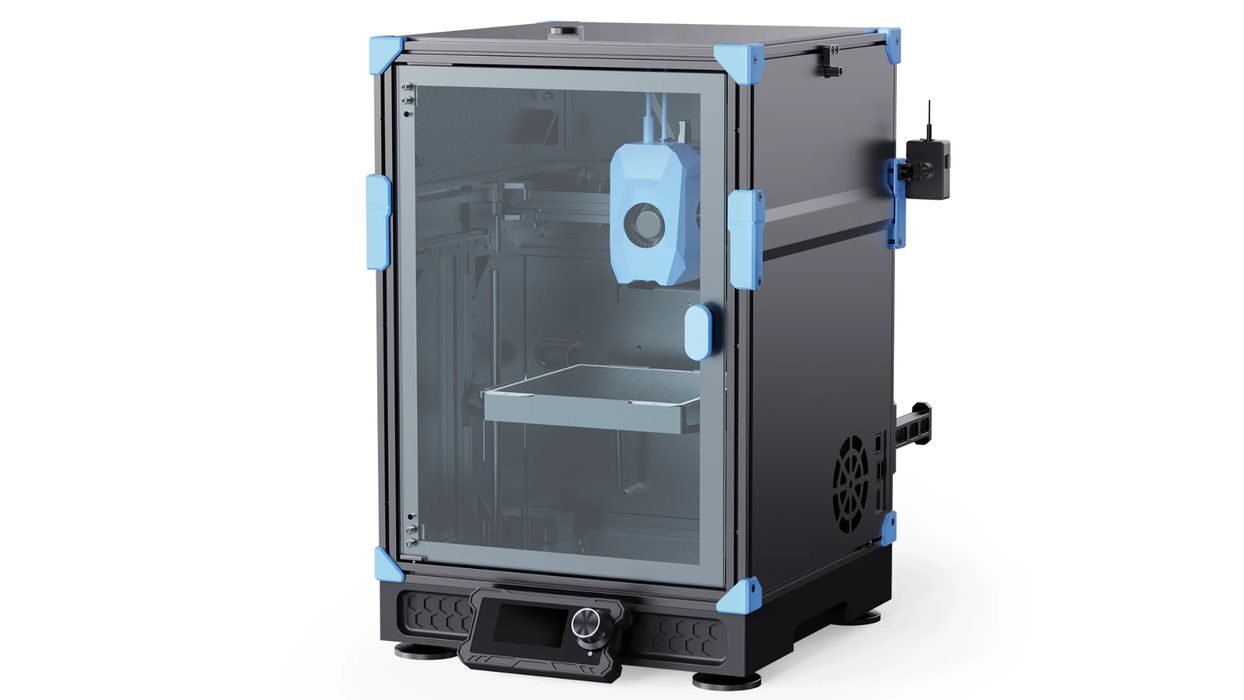
Sovol announced a new desktop 3D printer, the Sovol Zero.
The new machine is packed with a series of interesting features. Let’s take a look at what stands out.
The overall design of the machine is similar to many other options that have recently been announced, all of which are eerily similar to the highly successful Bambu Lab fully enclosed X1C design. That product was purchased by a massive number of buyers, so it’s not surprising that Sovol has its own version of this 3D printer format.
The Sovol Zero seems to focus on speed and accuracy. They’ve combined a series of features to enable very fast printing, including:
- CoreXY motion system
- Full linear rails on ALL axes (including Z)
- Input Shaping and Pressure Advance algorithms
- Toolhead maximum acceleration of 40,000mm/s/s
- Extruder volumetric capacity of an amazing 50 cubic mm/s
- Silicone damping pad to absorb machine vibrations
All of these combined to provide very high speed 3D printing, which Sovol lists as up to 1200mm/s.
That’s the same print speed as the FLSUN S1, currently the fastest commercially available desktop 3D printer.
Sovol does not describe the parameters used to achieve that speed, so it may be that it is only achievable when printing thin 0.1mm layers. 3D printer manufacturers often leave out that part, surprising operators hoping to achieve the highest speeds with 0.2mm layers. Nevertheless, it still could be the case that the Sovol Zero could achieve these high print speeds: the machine is designed to do so.
In addition to high print speeds, the Sovol Zero includes a number of other interesting features:
- Advanced auto-levelling that combines eddy current scanning with pressure sensing
- AC heated print bed for faster warm-ups
- Air filtration system
- Real-time build chamber heat monitoring
There’s something more about that last one, heat monitoring. Sovol said:
”Real-time chamber temperature monitoring with a temperature sensor, combined with the upcoming chamber heating component, ensures optimal printing temperatures for various filaments.”
It sounds like they will offer an option to upgrade to an actively heated build chamber. If so, that would automatically make the machine highly capable of 3D printing a wide range of engineering materials with ease.
Sovol didn’t specify the build volume, but from the looks of the machine, it is likely near 256 x 256 x 256 mm in volume.
They did not mention any sort of filament switching system similar to Bambu Lab’s AMS and competing alternatives.
There’s also something called “Adaptive Area Detection”, described here:
“Adaptive area detection compensates for leveling based on the downward projection of the print model, effectively reducing leveling preparation time. By detecting the model’s geometry, the extrusion volume is optimized to improve accuracy in detail areas.”
I have read this over several times and really have no idea what this is. Is it a levelling feature? Or is something going on during printing? Whatever this is, it seems new as I’ve never heard of this feature anywhere else.
The Sovol Zero is also billed as open source, but it’s not exactly clear what that means. Are they posting the blueprints on GitHub, for example? They don’t say. However, they do seem keen on allowing modifications to the Zero, so perhaps that’s what they’re trying to achieve.
How much does the Sovol Zero cost? When is it available?
We don’t know the answers to either question right now. Sovol announced the product, but has only provided an email notification sign-up option. There is no release date, nor any pricing specified.
That said, I would guess this device would be priced near US$1,000, or perhaps more. Stay tuned for more information from Sovol.
Via Sovol
